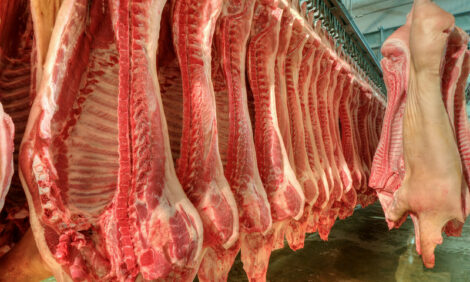



Antimicrobial resistance causing few clinical problems in swine
Watch the full interview or each part separately
Antimicrobial resistance causing few clinical problems in swine
Part 1: Good news for the industry
Part 2: Better information equals better decisions
Part 3: Challenges of producing without antibiotics
Clinical problems in swine due to antimicrobial-resistant infections are rare, Peter Davies, BVSc, PhD, professor, University of Minnesota, told Pig Health Today.
Patterns of resistance in swine have been stable for a long time. The only two pathogens in swine that may result in clinical management challenges due to antimicrobial resistance (AMR) are Escherichia coli and Streptococcus suis. Although there are certain multi-drug-resistant serotypes of Salmonella that could be a concern because they are foodborne pathogens, Salmonella infections in swine are uncommon, and they are “a relatively unimportant problem except in individual herds rather than across the industry,” Davies said.
VFD impact uncertain
It’s too soon to tell if the decreased use of in-feed antibiotics initiated by the updated veterinary feed directive that took effect in January 2017 has had an impact on AMR. “We may never directly answer that question,” and there would have to be a very large impact on resistance to be able to measure it with existing systems, he said.
The professor cited the experience in Holland, where there’s been a 50 percent to 60 percent reduction in the total use of antibiotics in farm animals and a 20% reduction in E. coli resistance. That’s based on measuring the percentage of E. coli susceptible to all the antibiotics tested. Testing for resistance of just one organism, however, is “sort of looking at a very small slice of the pie,” and more meaningful surveillance of resistance in the animal population is needed, Davies advised.
Learning curve
He questioned the value of linking AMR to the amount of antibiotics used. There’s a lack of understanding about the relationship between patterns of antibiotic use and how that translates into changes in patterns of resistance at an ecological level. “…with certain drugs, particular drugs, we can see that there have been changes in resistance patterns, but what that actually means in terms of public health risks or potential environmental implications — we’re still very early in the learning curve, I think.”
Davies likewise discouraged comparisons of antimicrobial use among different food-animal species because they have such different biology and management. The problems for each species should be defined and addressed within their own systems, “and I like to extend that to antibiotic use as well.”
What is essential, Davies said, is the clinical application of results from AMR surveillance because having better information always leads to more-informed practitioner decisions. That’s one reason why susceptibility testing is often obtained in the swine industry. It’s still the best information practitioners can get. Similarly, AMR surveillance is good for the industry.
Susceptibility testing in the swine industry is also common because herds have gotten bigger and so have the implications of treatment decisions, Davies said. However, he thinks the main value of getting better information on antibiotic use is really to promote education, to promote stewardship “and again advance the discussion with some quantitative data on what’s actually going on. I think that will help move the veterinary profession and the industry forward…”
He expects most susceptibility testing will continue to be based on phenotypic testing of cultures from diseased animals. Molecular methods — particularly next-generation sequencing — currently are used primarily in the research arena, but eventually, it will lead to a better understanding of the ecology of AMR in animal populations. “New technology is going to take us a long way in the next 5 to 10 years,” he predicted.








